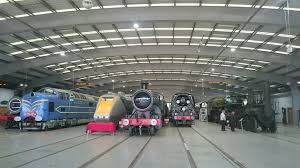Discovering the Shildon Railway Museum

Introduction
The Shildon Railway Museum, located in County Durham, is a significant attraction that celebrates the rich heritage of the British railway system. As the world’s oldest railway town, Shildon has been instrumental in the development of railway technology and culture. The museum not only showcases historic locomotives and carriages but also offers educational experiences that underline the importance of rail transport in today’s society.
A Brief Overview of Shildon Railway Museum
Established in 2004, the Shildon Railway Museum is part of the National Railway Museum group and is situated on the site of the former locomotive works. It houses a wide range of exhibits, including the famous ‘Locomotion No 1’, which was the first locomotive to carry passengers on a public railway. Visitors can explore various displays that detail the evolution of trains, the mechanics behind them, and the social impact of rail transport on communities.
Recent Developments
In recent months, the museum has seen a surge in visitors, partly due to increased interest in outdoor and educational activities following the COVID-19 pandemic. The museum has introduced new exhibitions, such as the ‘Journey Through Time’ display, illustrating the changes in railway technology over the years. Additionally, special events like steam weekends and children’s workshops have attracted families, enhancing public engagement with railway history.
Community Impact
The Shildon Railway Museum plays a vital role in the local community. It provides educational programmes for schools and attracts tourists, contributing to the local economy. The museum’s outreach activities include partnerships with local schools, where students can learn about science and technology through the lens of railway engineering.
Conclusion
In conclusion, the Shildon Railway Museum stands as a testament to the historical significance of rail transport in the UK. It not only preserves important artifacts but also educates future generations on the importance of this vital mode of transportation. As interest in heritage railways continues to grow, the museum is poised to enhance its offerings, ensuring its place as a key player in the preservation of railway history for years to come.
